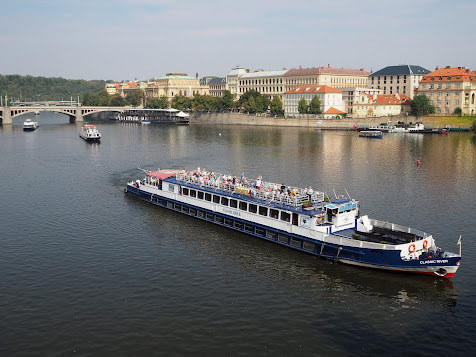Our next destination after the visit to the Prague Castle is Prague Old Town. To reach the Old Town, we had to walk pass Charles Bridge. Construction of this bridge started around mid 14th century and completed about fifty years later. The bridge is 621m long. It has 16 arches and the balustrades are decorated with thirty statues and statuaries. These statues are mostly saints and patron saints venerated during the period from late 17th century to early 18th century.
This bridge being the only access across River Vltava at medieval time had seen some of the most horrible things that happened in Prague. During the Habsburg Monarchy, twenty seven leaders of the anti-Habsburg rebellion were executed on 21 June 1621. Their severed heads were put up on display at the bridge tower to serve as deterrent to Czechs from further resistance.
John of Nepomuk, the Vicar-General of St. Giles Cathedral was Queen Sophia's confessor. Wenceslaus IV, King of the Romans and Bohemia suspected his second wife, Queen Sophia who is the cousin of the Queen was having an affair. Eager to find out the truth, he wanted John to disclose the content of Sophia's confession but he refused. On 20 March 1393, at the behest of King Wenceslaus IV, John was tortured, then bundled into a sack and thrown into River Vltava from Charles Bridge where he died of drowning. He was considered the first martyr of the Seal of Confession, a patron against calumnies (libel or slander). He was later canonized and declared a saint in 1729.
Many came as "pilgrims" to seek blessing by touching the plague placed below the statue of St. John of Nepomuk.


 |
| Touching the Plague below the statue of St. John of Nepomuk. |


 |
| Bridge Tower. |
Taking advantage of the crowds of visitors, this is also a favorite for street musicians, souvenirs peddlers and the marginalized.





No comments:
Post a Comment